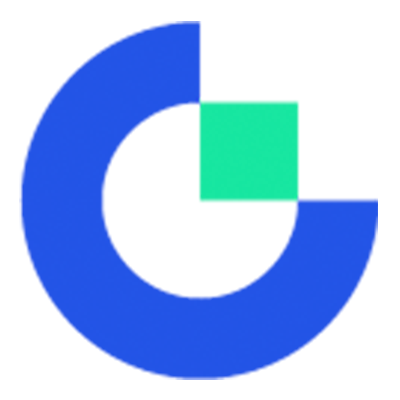Is Web3 dead, or is it poised to revolutionize the internet as we know it? As we delve into the future of the decentralized web, we'll explore the challenges facing Web3 adoption and compare it to the traditional internet. From blockchain to NFTs, we'll examine the latest Web3 technology trends shaping our digital landscape. Join us as we unravel the potential of Web3 and its impact on the future of online interactions.
The Evolution of Web3: Breaking New Ground
The internet has undergone significant transformations since its inception, evolving from Web 1.0 to Web 2.0, and now to Web3. Web 1.0, spanning from 1989 to 2004, was characterized by static web pages where users primarily consumed content. Web 2.0, which began around 2004 and continues to this day, introduced user-generated content and social media platforms. However, Web3 represents a paradigm shift towards a decentralized internet ecosystem[1].
Web3, a term coined by Gavin Wood in 2014, envisions a blockchain-based decentralized online ecosystem. This concept gained significant traction in 2021, driven by cryptocurrency enthusiasts and investments from prominent tech experts and companies. The core idea behind Web3 is to create a more user-centric internet experience, where individuals have greater control over their data and digital assets[1].
The transition from Web 2.0 to Web3 is not just a technological upgrade but a fundamental reimagining of how the internet functions. While Web 2.0 centralized power in the hands of a few tech giants, Web3 aims to distribute this power among users. This shift has the potential to revolutionize various sectors, including finance, social media, and digital ownership.
Key Innovations Driving Web3 Adoption

Several key innovations are propelling the adoption of Web3 technologies. Blockchain technology, the backbone of Web3, offers a decentralized and transparent way to store and manage information. This technology enables the creation of decentralized applications (dApps) that operate without central authorities, providing users with greater control over their data and digital interactions[2].
Non-fungible tokens (NFTs) have emerged as a significant trend in the Web3 space. These unique digital assets have found applications beyond digital art, extending to gaming, real estate, and sports. The NFT market exploded in 2022, reaching a staggering value of $41 billion. This growth demonstrates the potential of NFTs to revolutionize digital ownership and create new revenue streams for creators[2].
Another crucial innovation driving Web3 adoption is decentralized finance (DeFi). DeFi platforms leverage blockchain technology to offer financial services without intermediaries, democratizing access to financial products and services. The DeFi sector has seen remarkable growth, with total value locked (TVL) in DeFi protocols reaching $180 billion in November 2021[3].
Transforming Industries: Web3's Impact Across Sectors
Web3 technologies are poised to transform various industries, reshaping how we interact with digital services and conduct business online. In the social media realm, decentralized platforms are emerging as alternatives to traditional centralized networks. These platforms offer users greater control over their data and content, addressing concerns about privacy and censorship that have plagued Web 2.0 social media giants[4].
The retail industry is also experiencing a significant transformation with the rise of Web3 technologies. Brands like Gucci, Nike, and Zara are leveraging blockchain tools to enhance their digital marketing strategies and create new customer experiences. The benefits of this approach include connecting online and in-person shopping experiences, personalizing product recommendations, and combating counterfeiting and fraud[5].
Web3 is also making waves in the gaming industry, particularly through the play-to-earn model. Games like Axie Infinity have demonstrated the potential of blockchain-based gaming to create new economic opportunities for players. This model allows gamers to earn cryptocurrency rewards for their in-game activities, blurring the lines between gaming and financial markets[6].
Web3 in 2024 and Beyond: Emerging Trends
As we look towards 2024 and beyond, several emerging trends are shaping the future of Web3. The integration of artificial intelligence (AI) and machine learning (ML) with blockchain technology is expected to create more sophisticated and efficient decentralized systems. This convergence could lead to the development of intelligent dApps capable of addressing complex issues without human intervention[7].
The concept of decentralized autonomous organizations (DAOs) is gaining traction as a new form of organizational structure. DAOs operate on smart contracts and allow for decentralized decision-making, potentially revolutionizing corporate governance and community-driven projects. As DAOs evolve, they could become a dominant force in the Web3 ecosystem, enabling new forms of collaboration and resource allocation[8].
Interoperability between different blockchain networks is another crucial trend that will shape the future of Web3. As the number of blockchain platforms grows, the need for seamless communication and asset transfer between these networks becomes increasingly important. Projects focusing on cross-chain compatibility and interoperability solutions are likely to play a significant role in the Web3 landscape of 2024 and beyond[9].
Despite the promising future, Web3 faces several challenges that need to be addressed for widespread adoption. These include scalability issues, regulatory uncertainty, and the need for improved user experiences. As the technology matures and these challenges are overcome, Web3 has the potential to redefine our digital interactions and create a more decentralized, user-centric internet.
Conclusion
Web3 is reshaping the digital landscape, offering a decentralized alternative to the current internet paradigm. Through innovations like blockchain, NFTs, and DeFi, it's transforming industries and empowering users with greater control over their data and assets. As we look towards 2024 and beyond, the integration of AI, the rise of DAOs, and improved interoperability will likely drive further adoption and innovation in the Web3 space.
Risk warning: The rapid evolution of Web3 technologies may face regulatory challenges and market volatility, potentially impacting adoption rates and investment outcomes.
References
[1] Web3 - Wikipedia [2] What is Web3 and how could it change the internet? - World Economic Forum [3] What Is Web3? - Harvard Business Review [4] What is Web3 and why is it important? | ethereum.org [5] Interoperability: Our exciting and terrifying Web3 future [6] Future of Web3: Trends and Predictions for 2025 [7] What is Web3? Everything you need to know about the decentralized future of the internet | ZDNET [8] What Are the Future Trends in Web3: Top Web3 Trends 2023 and Beyond!



还没有评论,来说两句吧...